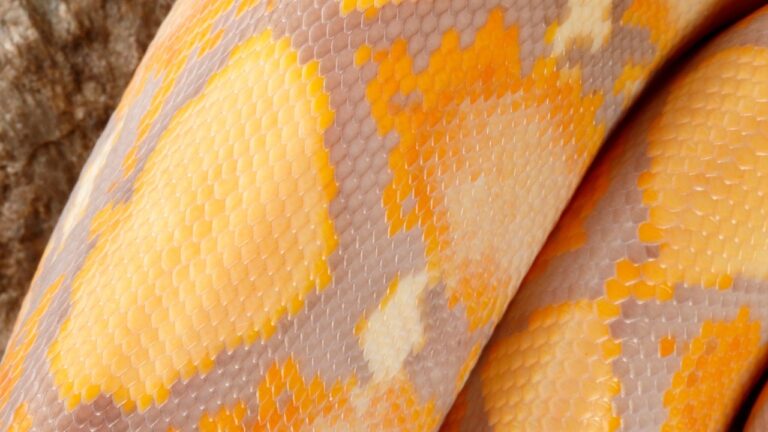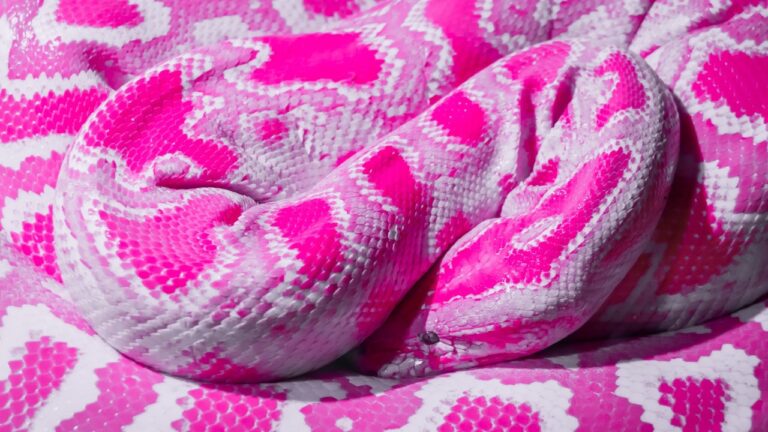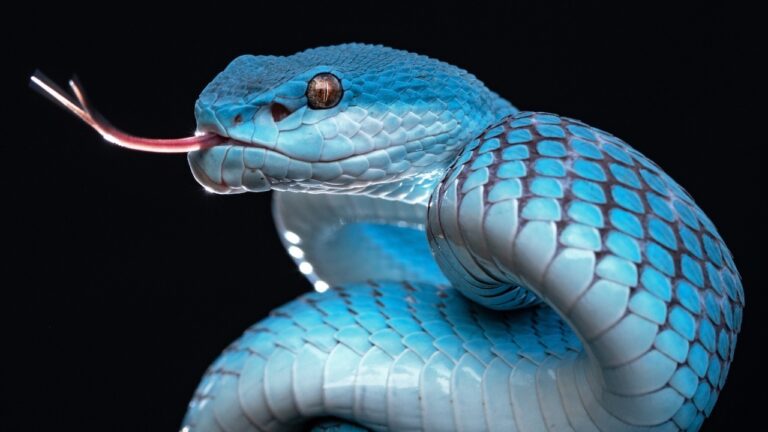Understanding Snake Neurological Disorders: A Guide for Reptile Enthusiasts
Overview of snake neurological disorders
Snakes are fascinating creatures renowned for their sleek bodies and captivating movements. However, like any other living being, they are susceptible to various health issues, including neurological disorders. These disorders can affect a snake’s nervous system, impairing its ability to function properly and impacting its overall well-being.
Neurological disorders in snakes can manifest in several ways, ranging from subtle behavioral changes to more pronounced physical symptoms. It is essential for reptile enthusiasts and snake owners to be aware of these disorders to ensure the health and happiness of their scaly companions.
In this comprehensive guide, we will delve into the world of snake neurological disorders, exploring the common ailments that can afflict these remarkable creatures. We will discuss the signs and symptoms to watch out for, the diagnostic process, and the available treatment and management options. Additionally, we will explore preventive measures that can be taken to minimize the risk of these disorders occurring in the first place.
By understanding snake neurological disorders, we can provide the best possible care for our slithering friends and help them thrive in their unique habitats. So let’s embark on this enlightening journey into the intricate world of snake health and well-being.
Common Snake Neurological Disorders
When it comes to snake health, it’s crucial for reptile enthusiasts to be aware of the various neurological disorders that can affect these fascinating creatures. Understanding these disorders can help snake owners provide appropriate care and seek timely veterinary intervention. In this section, we will explore some of the most common snake neurological disorders encountered by reptile enthusiasts.
Inclusion Body Disease (IBD)
Inclusion Body Disease, commonly referred to as IBD, is a viral infection that primarily affects boa constrictors and pythons. It is caused by the reptarenavirus and can have devastating effects on the nervous system of infected snakes. IBD is characterized by a wide range of symptoms, including neurological abnormalities, regurgitation, anorexia, and respiratory issues. Unfortunately, IBD is often fatal and has no known cure. Proper quarantine procedures and regular veterinary check-ups are essential for preventing the spread of this disease.
Respiratory Infections
Just like humans, snakes are susceptible to respiratory infections. These infections can be caused by a variety of factors, such as bacteria, viruses, or fungi. Respiratory infections in snakes can manifest as wheezing, open-mouth breathing, nasal discharge, and lethargy. If not promptly treated, respiratory infections can lead to more severe complications, such as pneumonia. It is important to note that improper husbandry, including incorrect humidity levels and inadequate ventilation, can increase the risk of respiratory infections in snakes. Regular veterinary check-ups and maintaining optimal environmental conditions are crucial for preventing and managing these infections.
Parasitic Infections
Parasites are another common cause of neurological disorders in snakes. Both internal and external parasites can wreak havoc on a snake’s nervous system. Internal parasites, such as nematodes and coccidia, can cause gastrointestinal disturbances and neurological symptoms. External parasites, like mites and ticks, can lead to irritation, stress, and potential transmission of other diseases. Regular parasite screenings, proper hygiene practices, and appropriate treatment protocols are essential for preventing and managing parasitic infections in snakes.
Neurological Trauma
Neurological trauma can occur in snakes due to various reasons, including falls, improper handling, or aggressive encounters with prey or other snakes. Traumatic injuries can result in neurological deficits, ranging from mild to severe. Symptoms may include loss of coordination, paralysis, and abnormal behavior. Immediate veterinary attention is necessary for assessing the extent of the injury and providing appropriate treatment. Preventing traumatic injuries involves creating safe and secure enclosures for snakes and handling them with care and caution.
Metabolic Disorders
Metabolic disorders can also affect the nervous system of snakes. These disorders often arise from improper nutrition and can lead to a host of neurological symptoms, such as muscle weakness, tremors, and abnormal behavior. Calcium deficiency, commonly known as hypocalcemia, is a significant metabolic disorder seen in snakes. It can result in muscle spasms, seizures, and even death if left untreated. Providing a balanced diet, including proper calcium supplementation, is crucial for preventing metabolic disorders in snakes.
As responsible reptile enthusiasts, it is essential to familiarize ourselves with these common snake neurological disorders. Recognizing the signs and symptoms of these disorders and seeking timely veterinary care can greatly improve the overall health and well-being of our scaly companions. In the next section, we will delve deeper into the signs and symptoms associated with snake neurological disorders. Stay tuned!
Signs and Symptoms of Snake Neurological Disorders
When it comes to snake neurological disorders, recognizing the signs and symptoms is crucial for early detection and treatment. While snakes may not exhibit obvious signs of illness, there are several key indicators that reptile enthusiasts should be aware of. By closely observing your snake’s behavior and physical condition, you can identify potential neurological issues and seek appropriate veterinary care.
Changes in Behavior
One of the most common signs of a snake neurological disorder is changes in behavior. Keep a close eye on your snake’s daily routines and note any deviations from their usual patterns. For example, if a typically docile snake becomes unusually aggressive or lethargic, it may be a sign of an underlying neurological problem. Similarly, if your snake starts exhibiting repetitive movements or appears disoriented, it could indicate a neurological issue.
Abnormal Movements
Abnormal movements are another telltale sign of snake neurological disorders. Keep an eye out for uncoordinated or jerky movements, as well as tremors or seizures. These movements may be sporadic or persistent, depending on the specific disorder affecting your snake. If you notice any unusual motor patterns or spasms, it’s important to consult a reptile veterinarian for a thorough examination.
Difficulty Shedding
Difficulty shedding, or dysecdysis, can also be a sign of an underlying neurological disorder. Snakes naturally shed their skin as they grow, but if the shedding process becomes problematic, it may indicate neurological issues. Look for signs such as incomplete sheds, retained eye caps, or prolonged periods between shedding cycles. These problems can be attributed to neurological conditions affecting the snake’s ability to shed properly.
Loss of Appetite
A sudden loss of appetite in a snake can be a red flag for neurological disorders. Snakes are generally voracious eaters, so a significant decrease in food intake should raise concerns. If your snake consistently refuses to eat or shows disinterest in prey, it may be a symptom of an underlying neurological issue. A reptile veterinarian can help determine the cause of the appetite loss and recommend appropriate treatment.
Respiratory Issues
Respiratory problems are not uncommon in snakes with neurological disorders. Difficulty breathing, wheezing, or excessive mucus in the mouth or nostrils can indicate a respiratory infection or other neurological issues. Additionally, if your snake displays open-mouth breathing or gasping for air, it may be a sign of respiratory distress. Prompt veterinary intervention is crucial to prevent further complications and ensure your snake receives the necessary care.
By being vigilant and observing any changes in behavior, abnormal movements, difficulties with shedding, loss of appetite, or respiratory issues, snake owners can play an active role in detecting potential neurological disorders. Remember, early detection and intervention are key to improving the prognosis for your scaly companion.
If you suspect your snake may be experiencing a neurological disorder, don’t hesitate to consult a qualified reptile veterinarian. They can conduct a thorough examination, order diagnostic tests if necessary, and provide an accurate diagnosis. In the next section, we’ll delve into the diagnostic process for snake neurological disorders. Stay tuned!
Click here to learn more about snake inclusion body disease.
Diagnosing Snake Neurological Disorders
When it comes to diagnosing snake neurological disorders, a thorough veterinary examination and diagnostic tests are essential. These steps help identify the underlying cause of the disorder and guide an appropriate treatment plan. Let’s take a closer look at each of these diagnostic approaches.
Veterinary Examination
A veterinary examination is the first step in diagnosing snake neurological disorders. During this examination, a reptile veterinarian will carefully evaluate the snake’s overall health, paying close attention to any signs or symptoms of neurological issues. They will observe the snake’s behavior, movement, and physical appearance to gather important clues about the potential disorder.
The veterinarian may ask you questions about the snake’s history, including its feeding habits, enclosure setup, and any recent changes in its environment. This information is crucial in understanding the context and potential triggers for the neurological disorder.
During the examination, the veterinarian might also perform a neurological assessment to evaluate the snake’s reflexes, coordination, and muscle strength. By assessing these factors, the veterinarian can gain valuable insights into the snake’s nervous system function.
Diagnostic Tests
In addition to the veterinary examination, various diagnostic tests may be recommended to further investigate the snake’s neurological disorder. These tests help to confirm the initial diagnosis, identify the specific cause of the disorder, and rule out other potential underlying conditions.
One of the commonly used diagnostic tests is imaging, such as X-rays or ultrasound. These imaging techniques can reveal any structural abnormalities in the snake’s brain or spinal cord, providing valuable information for an accurate diagnosis.
Laboratory tests are another crucial tool in diagnosing snake neurological disorders. These tests may include blood work, fecal exams, or swabs to detect the presence of infectious agents or parasites that could be contributing to the disorder. Additionally, specific tests may be performed to assess organ function and rule out metabolic disorders that could manifest as neurological symptoms.
It’s important to note that the specific diagnostic tests will vary depending on the suspected cause of the neurological disorder. For example, if the veterinarian suspects a respiratory infection as the underlying cause, they may recommend a culture and sensitivity test to identify the specific bacteria or fungi involved.
By combining the findings from the veterinary examination with the results of diagnostic tests, the veterinarian can make an accurate diagnosis and tailor an appropriate treatment plan for the snake’s neurological disorder.
Remember, timely diagnosis and treatment are crucial in managing snake neurological disorders effectively. If you notice any signs or symptoms of a potential neurological issue in your snake, don’t hesitate to seek professional veterinary care. Early intervention can greatly improve the chances of a positive outcome for your scaly friend.
Now that we’ve explored the diagnostic process for snake neurological disorders, let’s move on to the next section: Treatment and Management.
Treatment and Management
When it comes to treating and managing snake neurological disorders, there are several approaches that can be taken. The goal is to alleviate symptoms, improve the snake’s quality of life, and potentially even cure the underlying condition. In most cases, a combination of medications, supportive care, and environmental changes is employed to provide the best possible outcome for the reptile.
Medications
Medications play a crucial role in the treatment of snake neurological disorders. Depending on the specific condition, different types of medications may be prescribed. For example, in the case of Inclusion Body Disease (IBD), antiviral drugs may be used to slow down the progression of the disease and manage symptoms. Antibiotics are commonly prescribed for the treatment of respiratory infections and other bacterial parasitic infections that may affect the snake’s neurological health.
It’s important to note that medications should always be prescribed and administered by a qualified reptile veterinarian. Self-medication or using over-the-counter drugs can be dangerous and may even worsen the snake’s condition. Always consult with a professional to ensure the appropriate medication and dosage for your snake’s specific needs.
Supportive Care
Supportive care is an essential component of managing snake neurological disorders. This involves providing the snake with the necessary care and attention to help alleviate symptoms and aid in the recovery process. Supportive care may include:
-
Proper nutrition: Ensuring the snake is receiving a balanced diet that meets its specific dietary requirements. This may involve feeding specialized diets or administering nutritional supplements as recommended by a veterinarian.
-
Hydration: Maintaining proper hydration levels is crucial for the overall well-being of the snake. This may involve providing a water dish or utilizing other methods to ensure the snake has access to clean water at all times.
-
Comfortable environment: Creating a stress-free environment for the snake is important for its recovery. This may involve providing appropriate temperature and humidity levels, as well as a comfortable and secure enclosure.
-
Physical support: Depending on the severity of the neurological disorder, physical support may be necessary. This can include offering assistance with feeding or providing a supportive enclosure to prevent injury.
Environmental Changes
Making necessary environmental changes can greatly contribute to the treatment and management of snake neurological disorders. These changes are aimed at creating an optimal environment that promotes healing and reduces the risk of further complications. Some key environmental changes include:
-
Proper husbandry and enclosure setup: Ensuring the snake’s enclosure is set up correctly is vital for its well-being. This includes providing the appropriate substrate, hiding spots, and temperature gradients. A well-maintained enclosure can help reduce stress and promote recovery.
-
Quarantine new additions: Introducing new snakes to an existing collection can pose a risk of spreading infectious diseases. Quarantining new additions for a period of time allows for observation and the identification of any potential health issues before they can affect the resident snakes.
-
Regular veterinary check-ups: Regular visits to a reptile veterinarian are essential for the ongoing management of snake neurological disorders. These check-ups allow for the monitoring of the snake’s progress and the adjustment of treatment plans as necessary.
By implementing the right medications, providing supportive care, and making appropriate environmental changes, snake owners can greatly improve the outcomes for snakes affected by neurological disorders. It is important to work closely with a qualified veterinarian who specializes in reptile care to ensure the best possible treatment and management plan for your snake.
Remember, the well-being of your snake should always be the top priority. With proper care and attention, many snakes can lead happy and healthy lives, even in the face of neurological challenges.
Preventing Snake Neurological Disorders
When it comes to keeping your slithery companions healthy and happy, prevention is key. By implementing a few simple practices, you can significantly reduce the risk of snake neurological disorders. Let’s explore some preventive measures that every reptile enthusiast should consider.
Proper Husbandry and Enclosure Setup
One of the fundamental aspects of snake care is providing a suitable habitat. Proper husbandry plays a vital role in preventing neurological disorders. It is crucial to create an environment that mimics their natural habitat as closely as possible. This includes providing appropriate temperatures, humidity levels, and lighting conditions.
Ensure that the enclosure is the right size for your snake, allowing them enough space to move around comfortably. Snake scale rot and snake mouth rot are common conditions that can occur due to poor husbandry, so maintaining clean and hygienic conditions is crucial. Regularly clean the enclosure, remove waste, and sanitize any items within it.
Moreover, it is essential to provide suitable hiding spots and enrichment materials for your snake. These help reduce stress and promote natural behaviors, contributing to their overall well-being. By following these guidelines, you create a conducive environment that minimizes the risk of neurological disorders.
Quarantine New Additions
Introducing new snakes to your collection can be exciting, but it also poses potential risks. Snake mites, snake inclusion body disease, and snake respiratory infections are just a few of the problems that can be transmitted through new additions. To protect your existing snakes from these diseases, it is crucial to quarantine any newcomers.
During the quarantine period, keep the new snake separate from the rest of your collection. This allows you to closely monitor their health and behavior for any signs of illness. Snake septicemia and snake infectious stomatitis are examples of conditions that can be easily identified during this period. If any issues arise, you can seek prompt veterinary care without risking the health of your entire collection.
Quarantine periods typically last 30-90 days, depending on the specific situation and the advice of a reptile veterinarian. By being diligent about quarantine procedures, you can prevent the introduction and spread of potential neurological disorders.
Regular Veterinary Check-ups
Just like any other pet, snakes benefit from regular veterinary check-ups. These visits allow a trained professional to assess your snake’s overall health and detect any potential issues before they become serious. Regular check-ups can be instrumental in preventing snake neurological disorders.
During these visits, the veterinarian will conduct a thorough examination, checking for signs of illness and neurological abnormalities. They may also recommend diagnostic tests such as blood work or imaging to get a comprehensive understanding of your snake’s health.
In addition to the physical examination, veterinarians can provide valuable advice on nutrition, enclosure setup, and other aspects of snake care. They can help you identify and address any husbandry issues that may be putting your snake at risk for neurological disorders.
By scheduling regular veterinary check-ups, you demonstrate your commitment to your snake’s well-being and ensure that any potential problems are caught early. Remember, prevention is always better than cure!
In conclusion, preventing snake neurological disorders involves implementing proper husbandry practices, quarantining new additions, and scheduling regular veterinary check-ups. By following these guidelines, you can create a safe and healthy environment for your slithering companions, reducing the risk of neurological issues and promoting their overall well-being. So, embrace the role of a responsible reptile enthusiast and provide the best care possible for your snakes.
Conclusion
In conclusion, understanding snake neurological disorders is crucial for reptile enthusiasts to ensure the well-being and health of their scaly companions. These disorders can have a significant impact on a snake’s quality of life, and early detection and proper management are essential.
By familiarizing yourself with the common snake neurological disorders, such as Inclusion Body Disease (IBD), respiratory infections, parasitic infections, neurological trauma, and metabolic disorders, you can better recognize the signs and symptoms that may indicate a problem.
Changes in behavior, abnormal movements, difficulty shedding, loss of appetite, and respiratory issues are among the key indicators of snake neurological disorders. If you notice any of these signs, it is important to seek veterinary assistance promptly.
Diagnosing snake neurological disorders typically involves a thorough veterinary examination and diagnostic tests. These tests may include blood work, X-rays, ultrasounds, or even specialized tests for specific conditions. With an accurate diagnosis, appropriate treatment and management strategies can be implemented.
Treatment options for snake neurological disorders often involve a combination of medications, supportive care, and environmental changes. Medications may include antibiotics for infections or antiparasitic drugs for parasitic infections. Supportive care can include providing a comfortable and stress-free environment, ensuring proper nutrition and hydration, and addressing any secondary complications.
Preventing snake neurological disorders is always preferable to treating them. Proper husbandry and enclosure setup, including maintaining appropriate temperature and humidity levels, providing adequate hiding spots, and offering a balanced diet, can go a long way in promoting a snake’s overall health. Additionally, quarantining new additions to your snake collection and scheduling regular veterinary check-ups can help catch any potential issues early on.
In the end, being proactive and well-informed is key to safeguarding the neurological health of your snake. By staying attentive to your snake’s behavior and well-being, and by following the guidelines laid out in this guide, you can help ensure a long and healthy life for your scaly companion.
Remember, if you ever have concerns about your snake’s health or suspect a neurological disorder, don’t hesitate to consult with a qualified reptile veterinarian. Their expertise and guidance can make all the difference in the well-being of your beloved snake.







